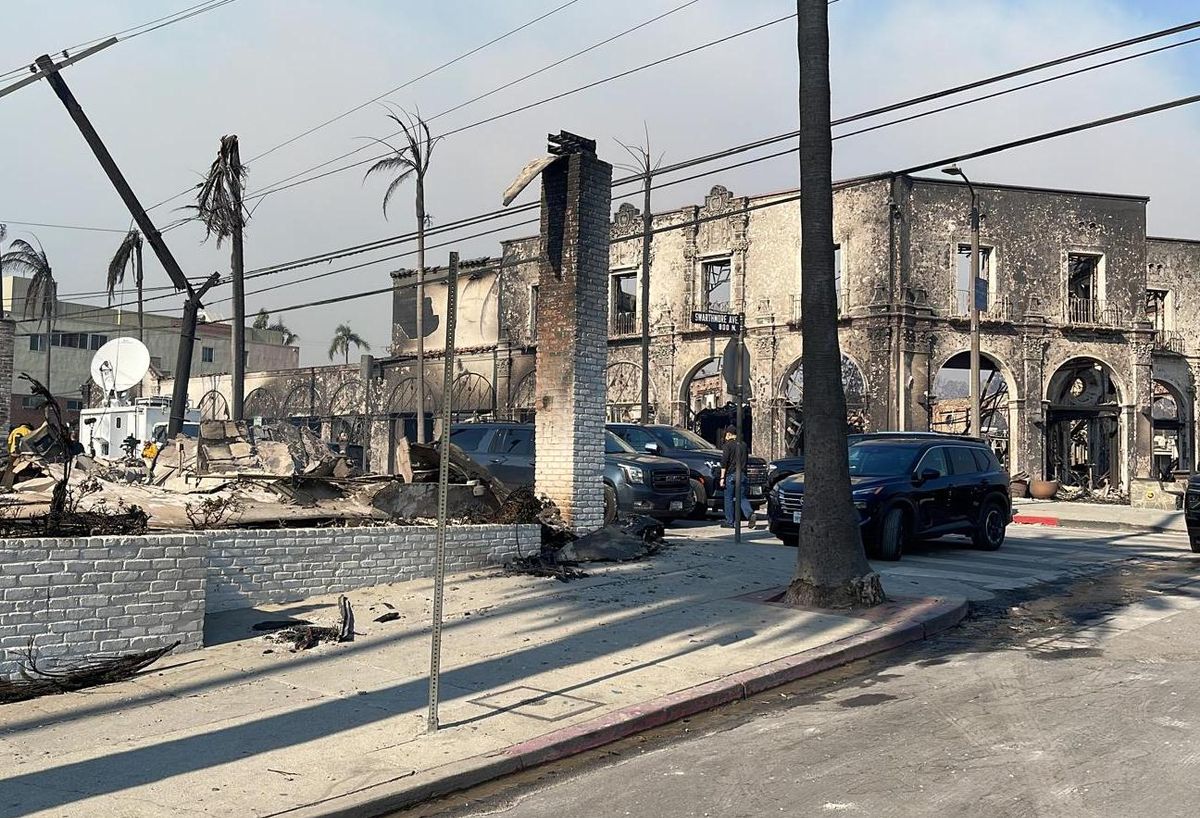Rebuilding efforts in Los Angeles following January’s devastating fires are underway for some residents, but full recovery will take years to achieve, setting up possible property tax shortfalls for a city already facing funding shortages.
By some estimates, between $61M and $100M in property tax revenue stands to be lost every year that homes and structures destroyed in the January fires in Los Angeles aren’t rebuilt. The loss would further strain city coffers, but the leaps in residential property values across the city are expected to blunt the impact.
In fiscal year 2024-2025, Los Angeles County collected approximately $21B in base property tax revenue, not including additional property-related taxes such as supplemental property tax revenue or direct assessments.
Of that, $4.9B went to county coffers and $2B went to the city of Los Angeles, with the rest of the county’s municipalities getting the balance.

Damage from fires in the Los Angeles area in January 2025
“The rise of property value [from residential properties] has more than offset, over the past couple of years, the loss in property tax revenue for cities, basically,” National League of Cities Program Director of Research and Data Analysis Farhad Omeyr said, speaking generally about cities that have experienced natural disasters.
In Los Angeles, the city and county aren’t in a position to leave money on the table.
The overall costs of responding to these fires have already contributed to fiscal challenges in the city and county of Los Angeles. The state is also experiencing a striking deficit, and there is no certainty around the arrival of federal funds to help rebound.
A February post from the state’s Legislative Analyst’s Office estimated that the Eaton and Palisades fires caused a reduction in assessed values that would produce a decrease in property tax payments of $100M to $200M in the 2025-2026 fiscal year.
Those tax dollars would have gone to the Los Angeles County and city of Los Angeles coffers, as well as the cities of Pasadena and Sierra Madre, local school districts and special districts.
Those values will be recovered, the LAO said, but that recovery is likely to take several years.
Rebuilding from the fires is in progress. Approximately 2,100 applications to rebuild have been received across jurisdictions where the fires destroyed an estimated 16,000 structures, including homes and businesses, according to a state progress tracker.
Damage in the city of Los Angeles alone has been pegged at nearly $52B. The fire also damaged properties outside of city limits, including in Malibu and in the unincorporated neighborhood of Altadena, which is overseen by the county.

LA Mayor Karen Bass has called the effort “the fastest disaster recovery in state history,” but the pace of progress has been criticized as too slow by some and too fast by others.
Prolonged loss of this revenue would begin to show up in the decline of a city to be able to provide critical services to residents, businesses and other stakeholders, according to Laurie Schoeman, chief impact officer at Partners for the Common Good and a senior housing adviser for the Biden administration.
The municipalities affected by the fires, including LA County, are likely to see higher revenues due to the way property tax is calculated in California but also see higher expenditures as they seek to rebuild infrastructure and spend more on public safety, a March paper from the UCLA Anderson School of Management found.
The likelihood of these municipalities having budget deficits increases by 25%, with impacts being greater the worse the fire is.
The wildfires impacted more than 23,000 parcels, including the total loss of over 10,000 homes, which significantly decreased property tax revenue, according to a release from the LA County Assessor’s Office.
But despite the wildfires, the LA County assessor announced in early August that the county’s assessment roll increased by $82B, or 3.91%, over last year, “marking 15 years of continuous growth with an estimated net local Roll value of over $2 trillion,” the release says.
However, that pendulum could swing the other way. This year is the first that Omeyr has seen a “plateauing” of property tax revenue nationally.
“It remains to be seen, of course, but it tells me maybe we are at a point where we are past the market boom, and maybe that will affect governments,” Omeyr said.
